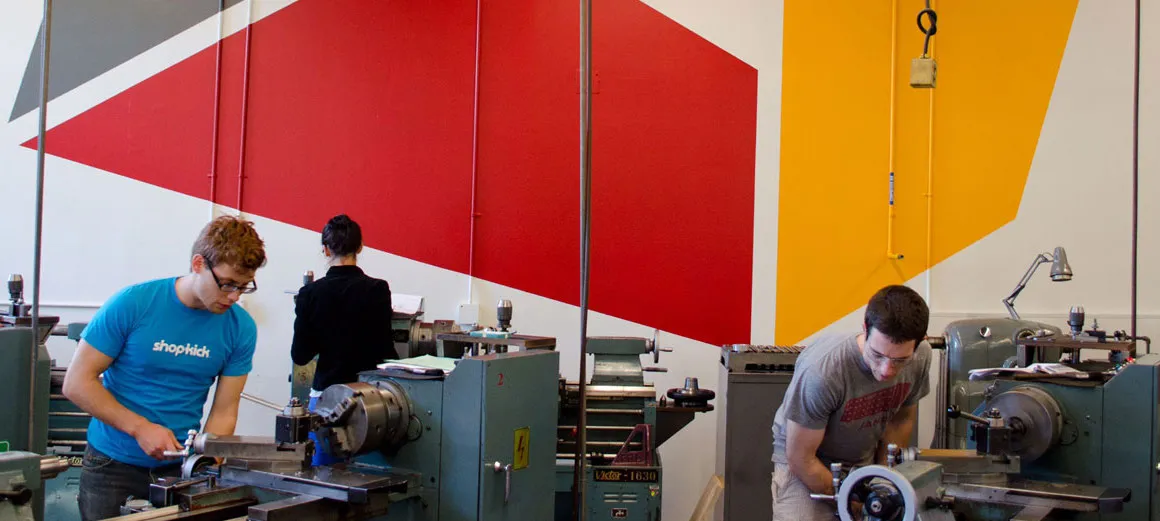Table of Contents
Why are YOU here? Let’s face it, no matter how much ex-vice provost Harry Elam’s attempts to convince us that “unicorns” symbolize intellectual ambition, most Stanford students know exactly what they’re chasing. You can deny this. Perhaps you’ll rave about your eye-opening humanities introsem. Or perhaps you can tell your friends you’re considering a humanities minor, an indulgence for your vocational sins.
Of course, it’s not easy to admit you’re a vocational student at Stanford. Everyone knows that vocational students are “sellouts” who lack ethics and creativity. This self-deception has penetrated the highest levels of the university - the administration’s first year core would gut our technical curricula in favor of a pale imitation of “the liberal arts,” one that foregrounds feminism, film, and postcolonial politics.
More than ever, Stanford’s vocational mission is worth defending.
From the day we arrive, recruiting emails flutter into our inbox. Internships, networking events, and opportunities lure students in with free food and T-shirts across the campus. It should come as no surprise that pre-professional groups are the largest type of organization on campus. Stanford offers not only a first-class education, but also imbues students with the confidence to put their ideas to work through its emphasis on practical applications.
Vocational classes and industry-affiliated research has defined STEM majors, and now even humanities majors are encouraged to have data science skills. It’s clear that our education is preparing us for a career, and there’s nothing wrong with that.
Stanford’s proposed “First Year Shared Intellectual Experience” excludes technical subjects and places the liberal arts on a pedestal. A liberal education is known to teach students to think critically, reason analytically and write clearly. But why can’t students develop these skills in vocational classes?
Proof writing, present in so many math and engineering problem sets, forces students to practice and master logical reasoning and coherent writing. We mustn’t forget that Euclid’s Elements, the first great book of math proofs, was held in similar esteem to the Greek Classics, read not only by scientists but writers, philosophers and even President Lincoln.
In regards to reasoning, how can we debate economic and ethical implications without grounding them in real-life? Decision Analysis, a course offered in the Management Science and Engineering department, challenges students to consider decisions through real-life examples and different perspectives. A vocational education equips students with the skills necessary to navigate real-world problems.
Perhaps then, the first year core intends to provide broad grounding for students to understand the world and the human condition, a commonly claimed benefit of a liberal education. However, a broad foundation doesn’t imply a broad outlook; “liberally educated” students can be biased and ideological. The emphasis on breadth over depth can, in fact, encourage superficiality.
Condensed into ten weeks, courses have little time to explore subjects in a nuanced and sophisticated manner. Students finish a class with a similarly stereotypical view as they held before, except this time, with the deceiving confidence that they have understood the class topic fully.
On the other hand, vocationalism encourages us to understand the world with precision, especially in the field of entrepreneurship that has given Stanford its reputation. In Market Research, for example, the pursuit of profit compels the vocational student to go the extra mile in search of the truth. Superficial conclusions and cherry-picking would result in failed products and falling share prices, while accurate analysis and objective understanding mean discovering an untapped market.
Stanford, in contrast to the “liberal arts” schools of the East Coast, was never meant to educate a small subsection of the population. Instead, it was founded to provide “the children of California” with some “useful pursuit”. Stanford’s focus, therefore, rests on the instrumental value of an education to the Bay Area, California and beyond.
Supporting student pursuits in practical affairs lies at the heart of Stanford’s mission. From Hewlett-Packard to Google, Stanford has always been directly involved in supporting student’s pursuits. Through professors offering technical assistance or investment capital, technology transfer from thesis to businesses, and from Stanford Industrial Park to SCPD, Stanford has been pumping out dozens of new student-enterprises each year.
Stanford should take pride in its vocational focus, connection with the most innovative firms, and careerist culture. Our greatest alumni are innovators, disruptors, industry leaders, not presidents or Nobel Peace prize winners. Our only President, Herbert Hoover, did not graduate with a traditional law or political science degree but was trained as a mining engineer. Many of my friends at Stanford did not come here to explore the human condition, but for a stepping stone into a practical and lucrative career, so let’s stop insisting we’re a liberal arts school.
In fact, humanities and social science institutions are literally indebted to vocational students. The Clayman Institute of Gender Studies is named for Michelle Clayman, Chief Investment Officer of New Amsterdam Partners. FSI was renamed after the gift of two private equity businessmen, Bradford Freeman and Ronald Spogli. The Hoover Institute, our most prestigious think tank and foremost institution in the social sciences and humanities, was, once again, founded by an engineering student.
I am not calling for all students to abandon the humanities and switch to a computer science or engineering major. Rather, I am inviting students to resist the administration’s attempts to stigmatize careerism and take pride in their vocational pursuits. After all, it’s why so many of us chose to attend Stanford in the first place.









